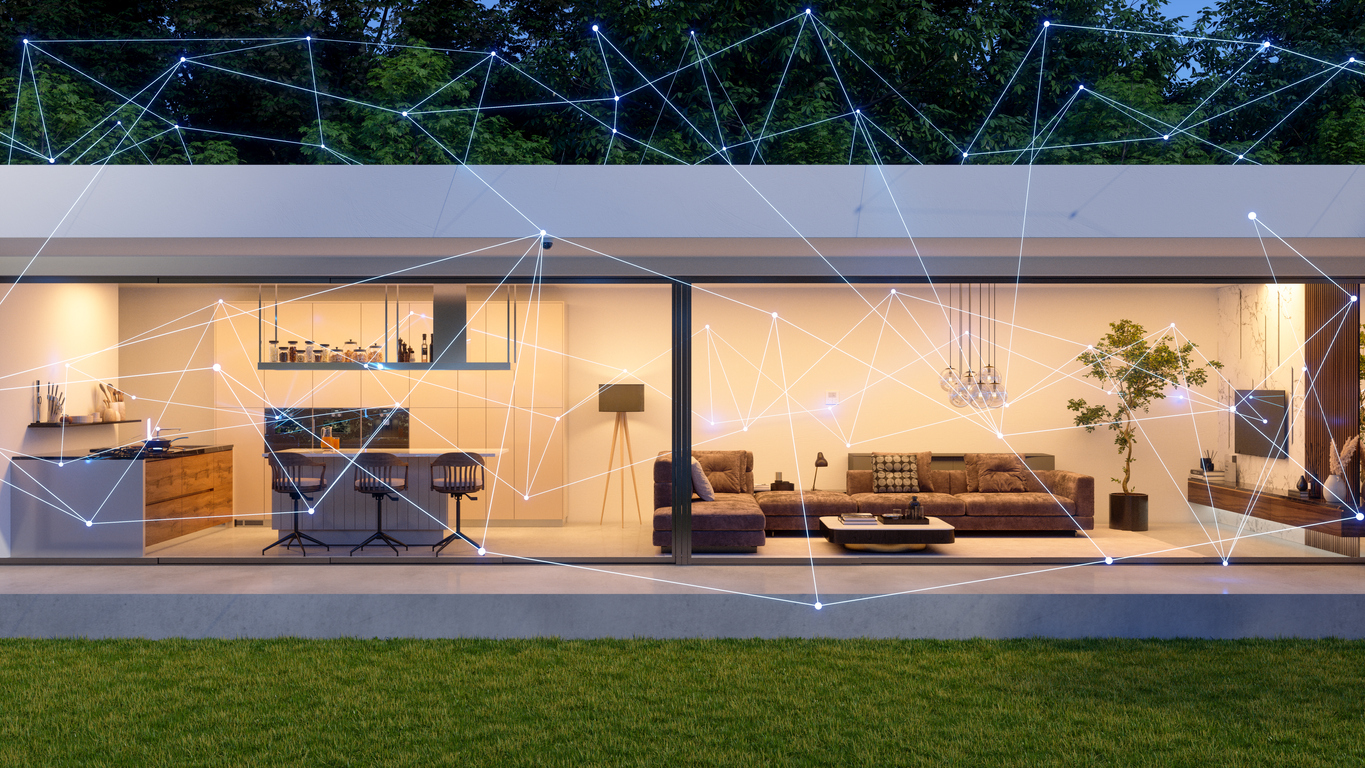As a partnering sponsor at the recent gridCONNEXT conference, we had a front row seat to the latest in grid modernization. A GridWise Alliance event, gridCONNEXT convened experts from business, utility, and government under the theme of an integrated grid for decarbonization and resilience.
With emerging opportunities to leverage federal IIJA and IRA funding, the conference buzzed with a wide range of engagement opportunities for industry. But one insight stood out above the rest: the grid demarcation line has definitely shifted into homes and business. This point was first raised by Gil Quiniones, the CEO of ComEd & Chair of the GridWise Alliance, and was explored by many speakers.
In his introductory remarks, Quiniones noted that customer devices will have intelligence and there is a need to integrate them into the grid. Utilities cannot assume customers are passive nor that the typical billing cycle reports provide sufficient energy insights. Moving the demarcation line into the customer-side of the meter is a critical prosumer expectation and needed to characterize distributed energy resources (DERs) for grid services.While this evolution supports aligning with FERC order 2222 for DER participation in wholesale markets, as Quiniones noted, the revolution will be “all about the data.”
Sense technology, which enables real-time intelligence for consumers and utilities, can connect these data dots, deliver insightful data to everyone, and transform data into grid intelligence.
Connect the data dots: Sense customers are smarter and more engaged
Today’s energy data services provide customers with total usage, typically a minimum of 24-hours later or sometimes not until a month after the consumption has taken place. In today’s connected world, this delayed energy data is archaic… Customers expect a connected experience with other consumer services, so why should their utility be different? An analogy helps: If you were using Google Maps to navigate a new part of town, and turned down the wrong street, would anything less than a real-time experience work for navigating your way back on course?
Sense provides the same real-time experience to help them navigate back on course for energy use. As Sense’s VP of Energy Services Colin Gibbs noted during his session, Prosumers Driving Markets – BTM Integration, “Sense provides customers real-time energy engagement, a real-time experience.” Customers can see second-to-second energy use, including at the device level. Sense’s advanced machine learning disaggregates and connects the data dots to provide device-level energy use, cost, carbon impact and other insights as well as integration with smart devices in the home. And customers come back daily to the Sense app for ease, comfort, wellbeing and safety.
For example, parents can receive a notification that the kids are home from school when the “dumb” garage door opens. Mom can turn off the Xbox when “it REALLY IS TIME” to get that homework done. Or the Sense app can notify you of a potential safety issue when a device was left on. The Sense experience is therefore “not just energy,” noted Colin, “it is how your home is performing.”
Deliver insightful data to everyone: Sense partners to scale to all homes
To achieve our 100,000 installed base today, each Sense monitor had to be bought online and required a professional electrician to install. “This is not something your average consumer would pursue” Colin pointed out. Sense believes our technology delivered on next-generation smart meters will enable us to deliver more value to both consumers and the utilities that serve them. Sense has already partnered with Landis & Gyr as the native customer application on the Revelo meter. This way every new smart meter will roll out with the Sense application for consumers.
With 2-million Sense-ready meters already committed in partnership with Landis+Gyr, Sense aims to deliver insightful data to everyone by scaling availability to all homes. Jonathan Staab, Landis+Gyr’s Director of Product Management, highlighted that this collaboration provides direct and real-time customer engagement.
Sense’s waveform measurements can identify individual devices, and the real-time experience supports both supply and demand prosumers. Sense’s industry leading waveform data science can therefore disaggregate customer loads but also can be aggregated to better plan and operate the power system.
In utility trials, Sense delivered 8% annual energy savings, 3x demand savings compared to traditional programs, and 1000x more customer engagement compared to energy portals. As Jonathan noted, when available in all homes, connecting this customer engagement can scale to provide grid-edge-to-enterprise services. Sense’s real-time customer experience therefore unlocks smart meter computation for customer and grid analytics.
Transform data into grid intelligence: Monitor behind-the-meter and in-front
As we described above, the demarcation line for customers is device insights. Sense can diagnose energy “hogs” and even equipment starting to fail. This alone can provide utilities with unprecedented DER adoption, utilization, and forecasting intelligence. At the same time, the demarcation line shifts up where Sense can aggregate our grid-edge analytics to characterize and monitor utility assets. Besides understanding real-time transformer loading or voltage optimization, Sense can detect grid faults and we are developing a remote power quality monitor to determine if those harmonics are coming from customer equipment, an incipient transformer failure, or vegetation intermittently touching power lines. When thinking “all about this data,” Sense’s convergence of behind-the-meter DER integration with waveform grid-edge situational awareness is a game changer in grid modernization.
Invest today in edge computing to better manage tomorrow’s grid
As states work with utilities to install new or replace old smart meters, especially if they seek to leverage federal grid modernization funding, ensuring the meter includes a real-time customer experience application and edge computing is likely required for regulator approval. That is New York’s position, and very recently likewise for Massachusetts. Ensuring customers benefit from smart meter deployments is essential today and it draws the foundational investments line that combines transformative customer experiences with better grid management.
